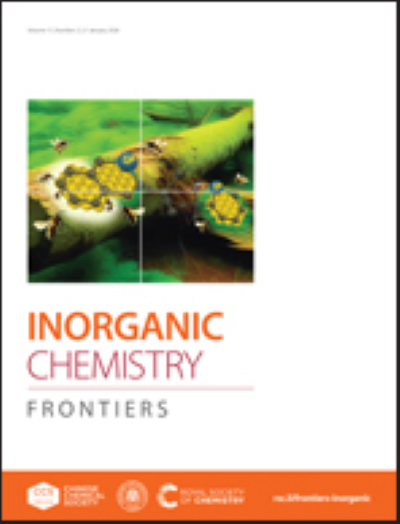用于高性能钾离子混合电容器的三维介孔石墨烯双原子缺陷调制
IF 6.1
1区 化学
Q1 CHEMISTRY, INORGANIC & NUCLEAR
引用次数: 0
摘要
通过将钾离子电池(PIBs)的高能量密度与超级电容器(SCs)的快速供电相结合,钾离子混合电容器(pihc)为先进的储能技术铺平了道路。然而,开发能够有效平衡电池型阳极和电容器型阴极行为的电极材料仍然存在重大挑战。本研究引入了氮和磷掺杂的三维多孔石墨烯(NP-3DPG),通过特殊的结构和电化学性能来克服这些限制。NP-3DPG材料具有显著的双重功能,可作为大容量阳极和富电容阴极。制备的pihc能量密度达到167.4 W h kg−1,功率密度达到72,000 W kg−1,并且在10,000次循环中保持87.3%的容量。广泛的表征和密度泛函理论(DFT)分析将这种性能归因于其广泛的比表面积、互连的多孔结构、扩大的层间间距、丰富的氧化还原位点、优化的电子特性和加速的离子扩散动力学。本研究强调NP-3DPG是下一代pihc极具潜力的电极材料。本文章由计算机程序翻译,如有差异,请以英文原文为准。
Dual Atomic Defect Modulation in Three-Dimensional Mesoporous Graphene for High-Performance Potassium Ion Hybrid Capacitors
By combining the high energy density of potassium ion batteries (PIBs) with the fast power delivery of supercapacitors (SCs), potassium ion hybrid capacitors (PIHCs) pave the way for advanced energy storage technologies. Nevertheless, a significant challenge persists in developing electrode materials that can effectively balance the behaviors of battery-type anodes with those of capacitor-type cathodes. This study introduces three-dimensional porous graphene (NP-3DPG) doped with nitrogen and phosphorus, engineered with specific structural and electrochemical properties to overcome these limitations. The NP-3DPG material demonstrates remarkable dual functionality, serving as a large-capacity anode and a capacitance-rich cathode. The as-fabricated PIHCs achieve 167.4 W h kg−1 energy density, 72,000 W kg−1 power density, and maintain 87.3% capacity over 10,000 cycles. Extensive characterization coupled with density functional theory (DFT) analysis attributes this performance to its extensive specific surface area, interconnected porous architecture, expanded interlayer spacing, abundant redox sites, optimized electronic properties, and accelerated ion diffusion dynamics. This work emphasizes NP-3DPG as a promising electrode material for next-generation PIHCs.
求助全文
通过发布文献求助,成功后即可免费获取论文全文。
去求助
来源期刊

Inorganic Chemistry Frontiers
CHEMISTRY, INORGANIC & NUCLEAR-
CiteScore
10.40
自引率
7.10%
发文量
587
审稿时长
1.2 months
期刊介绍:
The international, high quality journal for interdisciplinary research between inorganic chemistry and related subjects
 求助内容:
求助内容: 应助结果提醒方式:
应助结果提醒方式:


